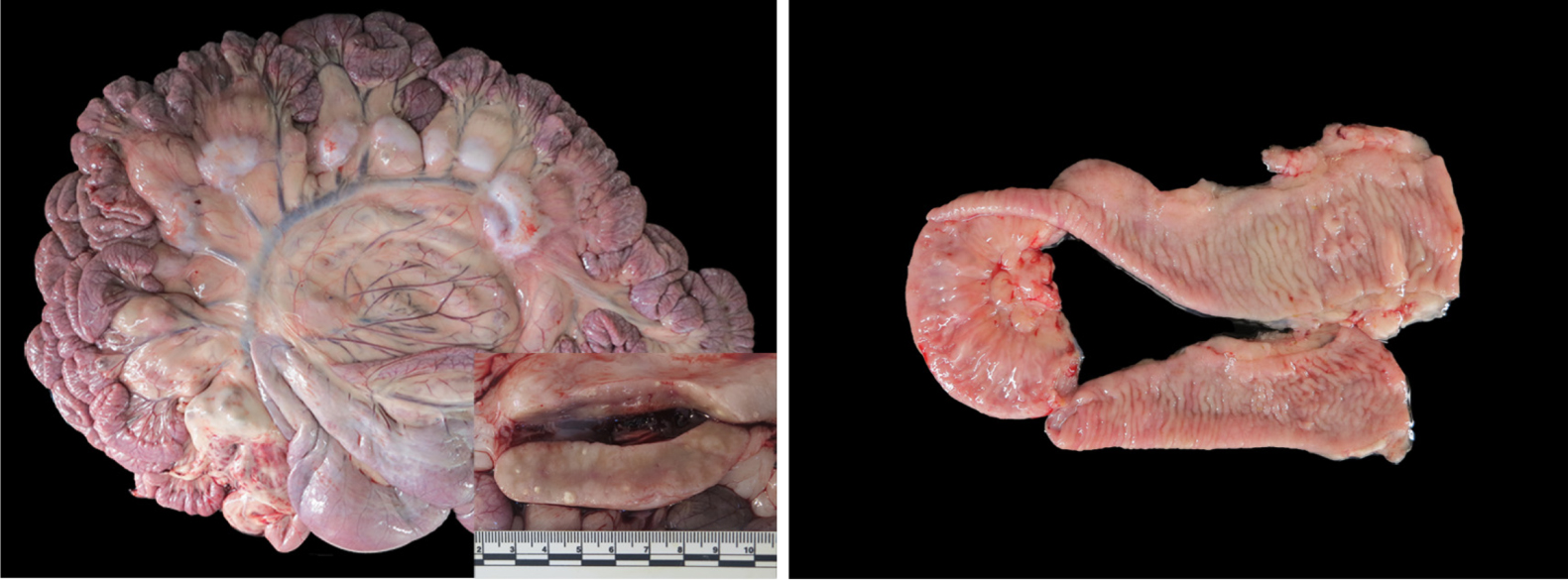E. Stefanova and nine colleagues in Spain have published an article on Johne’s disease pathology in goats. They contrast the pathology found in non-vaccinated goats and goats that have been vaccinated with a commercial heat-inactivated vaccine for Johne’s disease. They also describe lesions caused by bronchopneumonia and caseous lymphadenitis (CLA) plus pathology caused by assorted other disease problems. The pictures of gross pathology are particularly good. Mesenteric lymph nodes were a the most valuable tissue to sample for detection of MAP infections in goats by histopathology. This Open Access article was published in the journal Animals on May 19, 2023.

SUMMARY
Paratuberculosis (PTB), also called Johne’s disease, is a well-known disease with considerable financial impact on the farm industry worldwide. Nevertheless, data regarding the assessment of naturally infected goat herds is limited. The present study describes in detail the observed gross and histological lesions detected in 39 necropsies of goats (15 vaccinated and 24 non-vaccinated) from herds with a confirmed history of PTB. PTB microscopic lesions of various grades were detected in all animals in target organs and the presence of the causative agent was confirmed using different laboratory tools. The main inflammatory findings affected the hemolymphatic, respiratory and gastrointestinal systems. The lesions were confirmed microscopically with lesser macroscopically visible alterations. Our result demonstrated that non-vaccinated animals presented more severe PTB intestinal lesions and had respiratory inflammation in all age groups studied. Those also presented a higher prevalence of ileocecal valve PTB lesions. Gastrointestinal non-PTB lesions were detected in higher number in non-vaccinated goats. Thus, histology is a powerful tool for herd diagnosis and assessment. Mainly inflammatory lesions of the respiratory and gastrointestinal tract were detected in the studied PTB-affected herds. Additionally, vaccination against PTB could play a key role in the reduction of lung and gastrointestinal inflammatory processes present in the herd.
COMMENTS
The Gudair® vaccine used in this study is a commercial heat-inactivated vaccine containing 2.5 mg/mL of MAP strain 316 F with mineral oil adjuvant (CZ Vaccines S.A., Spain). In Spain, it is primarily used in sheep and goats. This vaccine is not licensed for use in the United States.